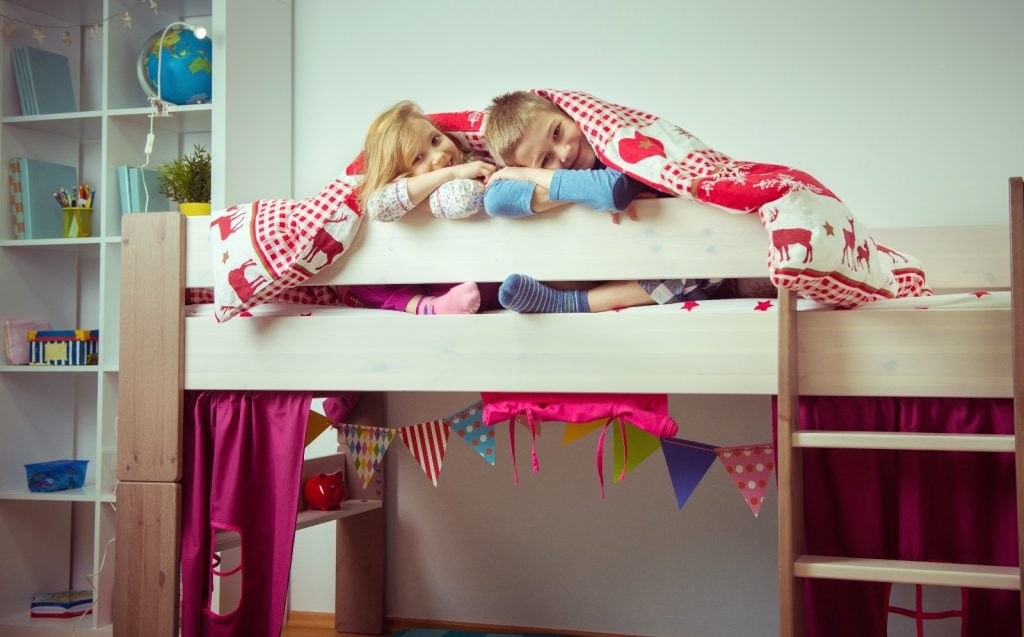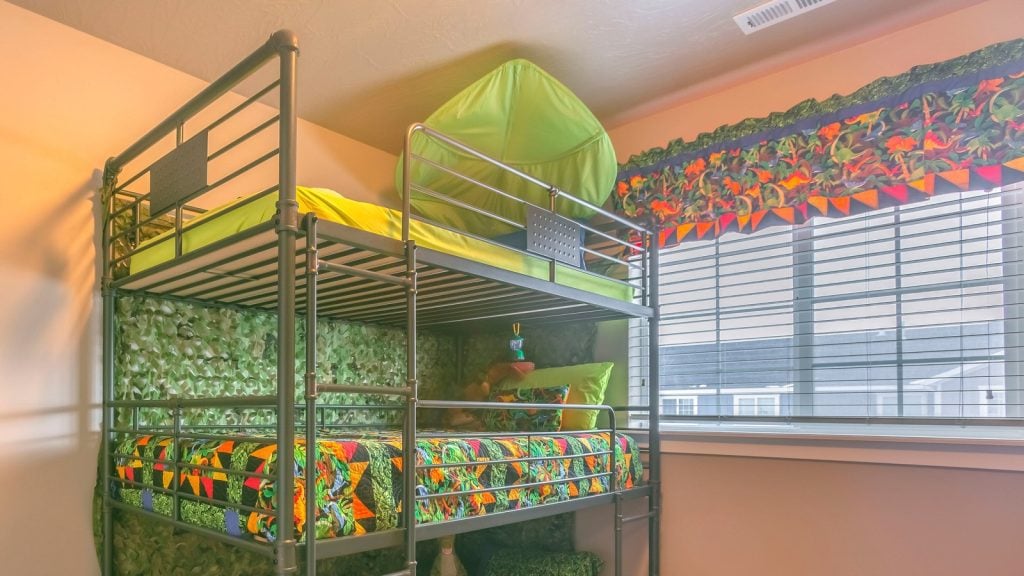Bunk beds represent popular sleeping options across the country; for siblings who share a bedroom, the likelihood is that they’ll share a bunk bed. In fact, the popularity of bunk beds isn’t merely restricted to homes, with Megabus launching bunk bed busses, alluding to the popularity and excellence of bunk beds. However, to a certain extent, bunk beds divide opinion; continue reading to gain an insight into the pros and cons of bunk beds and conclude whether a bunk bed is a viable option for your children.

Bunk Beds are designed for siblings who share a bedroom, and therefore for a bedroom that occupies a single child, a bunk bed may be considered an unnecessary investment with one of the beds not utilised. There is a common misconception that bunk beds only sleep two children, and whilst the most common form of bunk bed is a single bed placed on top of another single bed, there is a range of ‘triple sleepers’ that can accommodate three sleepers. Triple sleepers either consist of three single beds with each bed placed on top of one other or a double bed forming the bottom bunk, and a single bed featured as the top bunk. Therefore, if you have three children who share a bedroom, don’t be deterred by the prospect of a bunk bed.

Bunk beds represent fantastic space-saving solutions as they occupy less space than their alternative- two separate single beds. Consider a bunk bed to free up floor space if your children’s bedroom is on the smaller side; some bunk beds also feature integrated storage options that pave the way for a tidy and clutter-free bedroom. Moreover, a bunk bed is generally considered a cheaper option than two single beds; therefore, a bunk bed is regarded as a budget-friendly sleeping solution.
From a child’s perspective, a bunk bed is thought of as a fun and exciting bed. It is ideal for sleepovers, especially with the elevated sleeping surface of the top bunk representing something new and unprecedented for a child. In addition, some bunk beds, such as our campervan and London bus bunk beds from Julian Bowen, take on the form of initiative and playful designs and represent a fun-filled play area and place of solace and retreat; this, in turn, encourages sleep.
Sleeping and socialising in such proximity will naturally bring siblings closer together; therefore, a bunk bed can strengthen the bond between children sharing a bedroom and a bunk bed. Of course, children will inevitably squabble and bicker from time to time, especially if they spend so much time together, but this is outweighed by the memories and experiences formed from sharing a bunk bed.
In truth, the target audience and bunk bed demographic represent both pros and cons of purchasing a bunk bed. It’s recommended that children over the age of 10 should have their own bedrooms, and therefore a bunk bed could be seen as a relatively short-term purchase, however many bunk beds can easily be separated into two single beds, such as the Dorel Bunk Bed, for example, meaning that even if your children outgrow the thought of a bunk bed or move into their own rooms, the bunk bed will remain relevant.
Parents often worry about the safety of their child sleeping on the top bunk due to the elevated height of the top bunk. However, such attention to detail and careful consideration has gone into the design and manufacturing of bunk beds in recent years, and here at Mattressman, our entire range of bunk beds features robust, durable ladders and guarded protection surrounding the sides of the top bunk to prevent children from falling out of bed. Moreover, such is the confidence in our collection; the vast majority of our bunk beds include a one-year guarantee to provide peace of mind. Finally, it’s worth noting that the top bunk is recommended for children aged six and over due to its elevated height.